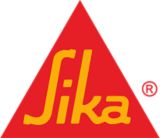Companies are confronted with the challenge of tapping into new digital business areas alongside their traditional market approaches, including their employees, customers, and business partners in the transformation process. Thanks to Sika’s determination to become a digital leader in its markets, the company succeeded in integrating these opportunities in its growth trajectory and has benefited from the surge in demand in e-commerce and the new opportunities created by the introduction of analytical capabilities.
Vision
The company’s digitalization vision is structured around four main pillars: revenue, efficiency, relevance, and acceleration. The first one is about building new revenue streams with digital services and a new business model. The second involves using digital technologies to drive down costs and increase productivity in manufacturing. The third is about differentiating on the market, staying relevant for customers, and growing by transferring offline strength to digital. The latter drives growth, adoption, and collaboration by leveraging Sika’s decentralized organization.
These pillars are put into practice via five digital building blocks:
More information
Customer Centricity is key to Sika’s digitalization, aligning with its “Customer First” value. The company leverages digital technologies to provide a consistent and relevant experience. Sika focuses on customer needs rather than technology. For example, the "Learn and Develop" initiative offers seamless learning through various platforms like website articles, webinars, and the "Sika Knowledge Center," where customers can take courses and earn certificates. Sika’s digital solutions are technologically optimized and integrated with its Customer Relationship Management (CRM) and Enterprise Resource Planning (ERP) systems. This helps Sika meet local needs while benefiting from operational efficiencies. Subsidiaries decide independently on the adoption and timing of each solution. The Digital Team Customer Centricity focuses on serving Sika's customers. In 2024, Sika invested in digital sales channels to enhance customer experience and simplify order placements. Smart apps redirected traffic from local websites to distributor eShops, boosting indirect sales from one-time customers. Additionally, the Customer Centricity Analytics (CCA) project integrates marketing data into a data lake, providing new analytics insights.
Operational efficiency is a key focus for Sika, contributing to profitability. Digitalization and data management play a vital role in optimizing operations across production, logistics, procurement, R&D, HR, finance, sales, and marketing. The "Operational Excellence" team, led by Global Operations, includes members from all regions and collaborates with the Global Process Owner team to design and harmonize end-to-end business processes. They also work with regional teams to implement digital solutions across functions. Automation boosts efficiency, with interconnected operating systems and IT. Initiatives include:
- Smart logistics and warehousing: Fully automated warehouse in Ohio, USA, with self-driving forklifts and SAP EWM integration.
- Manufacturing technologies: Automation of manual processes and data collection from sensors for efficiency gains.
- Artificial Intelligence (AI): R&D activities using machine learning to accelerate experimental outcomes, with AI exploration in operations.
Sika leverages digital technology to optimize and enhance processes related to its products and solutions. Examples include calculation software to avoid material waste and monitoring tools to identify repair needs. Sika's digital solutions cover the entire value chain of concrete production. The Sand App, for instance, offers fast sand analysis for optimized concrete mix design, while CiDRA Concrete Systems Inc. provides IoT-based systems to monitor concrete quality during transport. Sika is also advancing 3D printing in construction, offering a complete solution from mortars to software, and has partnered with several companies to commercialize this technology. Modular construction, leak monitoring in roofing, and corrosion sensors in concrete structures are other innovations. Sika's digital-twin platform aggregates data for visualized monitoring, supporting digitalization across design, processes, and operations. Sika's "Scout" innovation concept and partnerships with startups further drive digital opportunities and sustainability.
Digital workplace (DWP) transformation streamlines processes for Sika’s employees, enhancing effectiveness. Employees are equipped with necessary skills and tools to thrive in today's workplace. Through Microsoft-based digital workplace tools, Sika promotes collaboration, communication, and process automation. The "Efficient Knowledge Worker" initiative is led by the Digital Workplace (DWP) User Adoption team, comprising members from corporate Learning and IT departments. To bolster this effort, a champions' network called the “Booster Organization” supports local digital transformation. Boosters, as Digital Workplace Champions, encourage user acceptance of new IT solutions and existing platform functionalities. They help coordinate communication and training, guiding Sika employees through digital changes. Reaching all employees digitally is challenging, especially those without personal computers. Sika has given plant workers digital identities to access collaboration and communication platforms via personal devices. Various pilots explore enhancing employee productivity with AI in office environments, including MS Office and OpenAI capabilities.
Sika’s IT architecture supports digital transformation with globally standardized core applications. These generate vast amounts of data daily managed according to Sika’s Single-Source-of-Truth concept and protected by the Cybersecurity Team and Data Governance. The Group IT Management team, led by the Head IT Sika Group, includes managers for IT Infrastructure, IT Applications, IT Services, Cybersecurity, and regional IT Managers. They define IT Strategy, approve new applications, and manage the IT landscape. Key initiatives include:
- IT landscape modernization: Upgrading Sika’s core Enterprise Resource Planning (ERP), upgrading the web platform to the cloud with enhanced cybersecurity.
- Single source of truth data architecture: Launching a new IT infrastructure with Data Lakes and analytics capabilities, connecting first data sources, and starting pilots in several areas to reduce complexity and secure data integrity.
Sika Global Digital Board
The Sika Global Digital Board was established in 2020 in response to the increasing relevance of topics like digitalization and cybersecurity. These social and economic development trends create risks as well as business opportunities that allow Sika to actively shape the process of change and diversify and improve customers engagement channels. The Board is composed of the CEO, CFO, Regional Manager EMEA, Regional Manager Asia/Pacific, Head Construction, Chief Innovation & Sustainability Officer and the Head IT Sika Group.
Cybersecurity
International corporations are exposed to cyberattacks that include any type of offensive maneuvers targeting computer information systems, infrastructures, computer networks, and/ or personal computer devices through malicious acts. Sika has a strong organization in place to monitor, detect, mitigate, and resolve such risks.
Cyber risks are amongst the top risks in Sika’s Enterprise Risk Management framework. These risks are regularly assessed by the Board of Directors. The CFO is responsible for risk management in cybersecurity, supported by the Head IT Sika Group.

